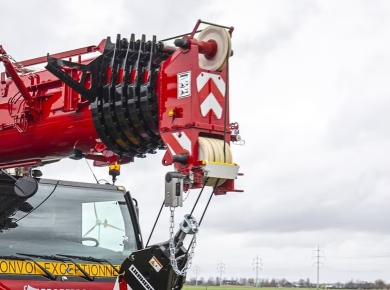Construction sites are a dizzying blend of activity and potential hazards, and there’s one risk that looms larger than most: working at heights. I’ve seen firsthand how the adrenaline of working on scaffolding or rooftops can overshadow the critical importance of rigorous safety training. It’s not just a box to check off; it’s a life-or-death necessity that all too often gets glossed over. The tragic truth is that the training gap in this area has led to too many preventable accidents and fatalities. As professionals in construction, health and safety, and site management, it’s imperative we confront this issue head-on.
The Realities of Working at Heights
When we talk about working at heights, we’re not just discussing the occasional ladder or scaffold; we’re often dealing with precarious situations where a split-second decision can lead to catastrophe. According to statistics, falls from heights are among the leading causes of workplace fatalities in the construction industry. The reality is that many workers may feel invincible, especially if they’ve been doing the job for years. But experience can create a dangerous complacency.
I once witnessed a veteran worker take a shortcut while installing safety rails on a multi-story building. He thought he could balance on the edge without harnessing up. It was a stark reminder that no matter how experienced someone is, the basic tenets of safety must always be adhered to.
Understanding the Training Gap
The training gap often stems from a lack of consistent, quality education that addresses the specific challenges of working at heights. Many organizations provide general safety training but fail to offer specialized courses that cover the nuances of height-related work. This gap leads to a workforce that might understand safety protocols in theory but lacks the practical knowledge needed to apply them effectively.
Consider the example of a company that offered a single-day training session once a year. While it met compliance requirements, it did little to instill a culture of safety that employees could internalize. Workers left the session with a certificate but returned to their daily tasks without the reinforcement needed to make safety second nature.
Implementing Effective Training Programs
To bridge the training gap, organizations need to invest in comprehensive safety training programs that are not only informative but also engaging. It’s essential to move beyond the traditional lecture format and incorporate interactive elements such as simulations, hands-on exercises, and real-world scenarios.
Hands-On Training and Simulations
One of the most effective methods I’ve found is the use of hands-on training and simulations. During one training session, we set up a mock construction site where employees had to navigate various height-related tasks while wearing harnesses and using safety equipment. This practical experience allowed them to understand not only how to use the equipment but also the importance of doing so in a controlled environment.
Such training is invaluable. It helps workers feel comfortable with equipment and reinforces the importance of protocols in a way that theoretical training simply cannot match.
Regular Refresher Courses
In addition to initial training, regular refresher courses are crucial. The construction industry is constantly evolving, with new regulations and technologies emerging. Keeping your team updated on the latest safety standards and equipment can significantly reduce the risk of accidents.
One company I worked with scheduled quarterly refreshers that included updates on safety regulations, as well as new equipment training. Not only did this foster a culture of safety, but it also encouraged employees to speak up about their concerns and share insights from their experiences.
Creating a Safety Culture
Establishing an effective training program is only part of the solution. Equally important is creating a culture where safety is prioritized and everyone feels responsible for their own safety and that of their colleagues.
Encouraging Open Communication
Fostering open communication is key to building this culture. Workers should feel comfortable discussing safety concerns without fear of retribution. During safety meetings, encourage dialogue by asking for feedback on safety practices and inviting team members to share their experiences.
I’ve seen how powerful this can be; team members start to take ownership of safety practices, and it becomes a shared responsibility rather than just a top-down mandate. When everyone is engaged, it dramatically decreases the chances of accidents.
Recognizing Safe Practices
Recognition also plays a vital role in reinforcing safety culture. Acknowledging employees who consistently follow safety protocols can motivate others to do the same. Consider implementing a reward system for teams that demonstrate exceptional safety practices over time.
When a colleague is recognized for their commitment to safety, it not only boosts their morale but also sets a standard that others strive to meet.
Utilizing Technology for Safety Training
Advancements in technology offer innovative ways to enhance safety training. Virtual reality (VR) and augmented reality (AR) can simulate high-risk environments without the actual danger.
VR and AR in Safety Training
Using VR, workers can experience scenarios that mimic working at heights, allowing them to practice their responses and decision-making skills in a safe space. This technology provides an immersive experience that can deepen understanding and retention of safety protocols.
A construction firm I consulted for recently adopted VR training modules, and the feedback was overwhelmingly positive. Workers reported feeling more prepared and confident when faced with real-life situations on the job.
Conclusion: Prioritizing Safety is Non-Negotiable
The training gap in working at heights is a pressing issue that demands our attention and action. By investing in comprehensive and engaging training programs, fostering a culture of safety, and embracing new technologies, we can significantly reduce the risks associated with height-related work.
Every worker deserves to return home safely at the end of the day. Let’s commit to closing the training gap, ensuring our teams are equipped not just with knowledge, but with the practical skills and mindset needed to navigate the heights safely. It’s not just about compliance; it’s about creating a legacy of safety that will last for generations.


